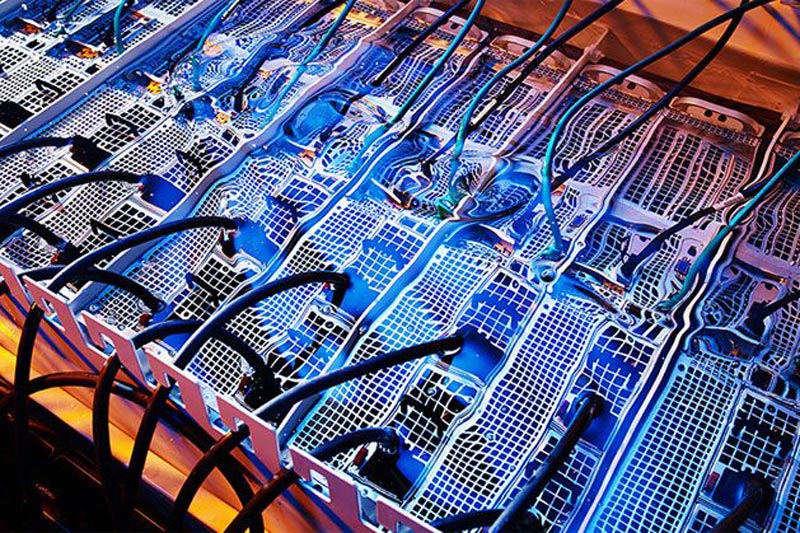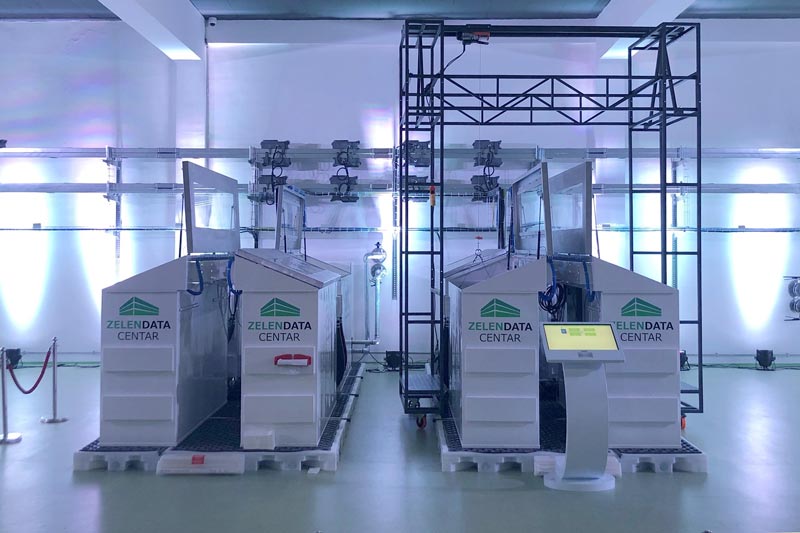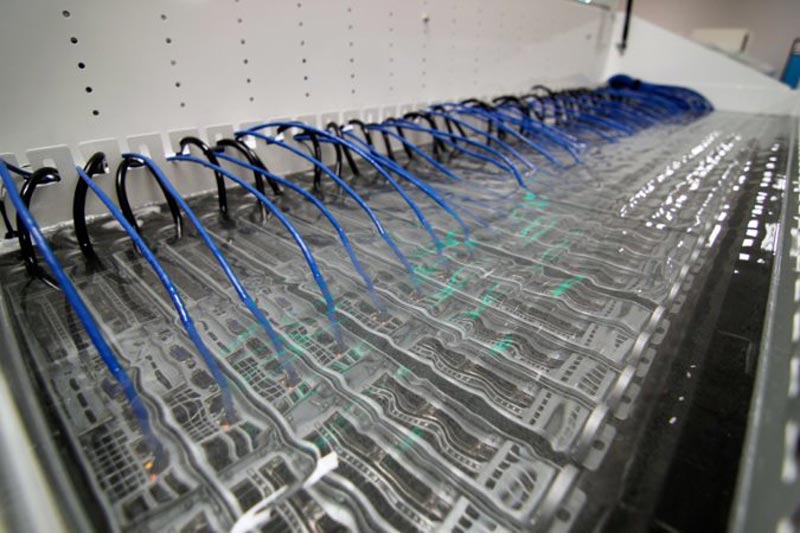
Sooner or later all crypto miners will use immersion cooling
To many, cryptocurrencies are a head-scratching investment. According to the business data platform Statista, the overall cryptocurrency market capitalisation was USD1,785 billion on February 3, 2022. Tomorrow, the value could be significantly higher… or considerably lower. These virtual currencies are subject to ferocious price swings and the staggering value attributed to some of these digital assets continues to baffle the layman.
While these volatile currencies are too unnerving for many investors, a growing populace is convinced that the alternative to conventional currency will upend the traditional market where central banks guide individual economies.
It is the unregulated nature of cryptocurrencies that are attractive to proponents as the digital assets are managed by their users. Investors argue the currencies deliver greater control over finances, minimise human reactions—making them free from biases, remove intermediaries such as banks and offer much lower fees. However, it is a lack of regulation of virtual currencies that is also one of the main criticisms.
“Mining” is the process by which many cryptocurrencies are both created and accounted for. I am not talking about workers with pickaxes and hard hats entering a dark underground environment. The process of mining is where users compete to register the latest transactions to the cryptocurrency blockchain by solving complex mathematical equations.

A decade or so ago, mining could be undertaken from the comfort of your living room. Nowadays, fierce competition has resulted in the development of huge data centers, or rig “farms”, with specialised machines that attempt to out-compete other miners to register transactions to receive a block reward.
However, with the world becoming more environmentally conscious, cryptocurrency mining has been called into question. These huge mining operations consume an astonishing amount of energy. In mid-2021, Elon Musk backtracked on an earlier commitment that Tesla would accept Bitcoin when purchasing its vehicles. Musk highlighted concerns over the rapidly increasing use of fossil fuels for Bitcoin mining and transactions.
Bitcoin is the world’s largest cryptocurrency. According to a 2021 calculation by the Bitcoin Electricity Consumption Index, developed by the Cambridge Centre for Alternative Finance, Bitcoin mining consumes 133.68 terawatt-hours (TWh) a year of electricity. By way of comparison, the entire nation of Sweden consumed 123.5 TWh of electricity in 2020, according to energy intelligence and consulting company, Enerdata. Although, the 3rd Global Crypto Asset Benchmarking Study released by the University of Cambridge Judge Business School suggests that 39% of Bitcoin mining is powered by renewable energy.
While cryptocurrency “mining” is metaphorical, the environmental impacts are very real. The more power the rig farms use, the hotter they become. In turn, they require more power for cooling to stop the hardware from overheating.
Immersion cooling is an energy-efficient method of cooling where computing hardware is submerged directly into tanks containing synthetic dielectric coolants. Around the world, data centers are starting to consider immersion cooling for heat dissipation and improved performance. While air cooling continues to dominate the sector, a 2021 paper published by the Uptime Institute indicated that few stakeholders think air cooling will remain dominant in 10 years. 29% of respondents believe full immersion cooling is currently a viable cooling option, though they suggest limited choices for Liquid Cooled IT Systems and a lack of standardisation are barriers to adoption.
In general, there are two main liquid categories, hydrocarbons (i.e. mineral, synthetic or bio oils) and fluorocarbons (i.e. fully engineered liquids). Dielectric liquids are divided into single- and two-phase applications. Single-phase uses a circulation method for the dielectric liquid across hot electronic components and to a heat exchanging approach. Two-phase immersion uses a low-temperature evaporation process to cool hot electronics and transfer the heat out of the liquid. The gas is cooled again by a heat exchanging method to allow return flow into the larger liquid volume.
Similar to data centers, crypto mining operations are searching for improvements in energy efficiency and performance, with many poised to shift to immersion cooling. In an interview with Bloomberg, Nishant Sharma, founder of BlocksBridge Consulting, suggested that “sooner or later, all big miners will be doing large-scale immersion mining.”
Immersion cooling allows miners to reduce the temperature of machines to enable more efficient performance. A cooler machine enables greater overclocking speeds—where miners can increase clock and memory speeds to higher than their official speed grades—which allows them to increase the earnings per machine. Full immersion cooling can also reduce dust and maintenance times and heat can be recycled for energy.

In October 2021, Brian Roemmele, co-host of the Around the Coin podcast, told his 120,000 followers on Twitter that “by submerging Bitcoin Miners in liquid, heat and noise is reduced by 95% and we can recapture up to 40% of the heat and convert this to power.” The co-host of the leading fintech and crypto podcast also suggested that “Bitcoin will be 100% green by 2024,” although some observers believe the timeframe is unrealistic.
Immersion cooling is a long way from becoming a mainstream option, however, some large crypto mining companies are already making the switch. On October 19, 2021, Riot Blockchain, a Nasdaq-listed industry leader in Bitcoin mining, announced it was developing 200 megawatts (MW) of immersion-cooling technology at its Whinstone, Texas, U.S.A., facility. In a press release, the company suggested it is the first industrial-scale immersion-cooled deployment of Bitcoin mining hardware. The development is expected to host around 46,000 mining machines.
Joe Capes, CEO of immersion cooling specialist LiquidStack, believes that hardware power densities in data centers are reaching the point where there is little option but to revert to liquid cooling. Central processing units (CPUs) can reach 800W to 1000W and graphics processing units (GPUs) of 500W to 600W are now commonplace. Air cooling above 270W per chip is very challenging, says Capes. Hardware makers are starting to tailor servers to use liquid cooling.
Crypto mining companies tend to chase cheap electricity. Until 2021, China was the world leader in cryptocurrency and mining and at one point accounted for around 75% of mining operations. China banned cryptocurrency in 2021 citing concerns around the impact on the environment and the potential to jeopardise China’s pursuit of carbon neutrality, as well as fears the digital currencies would be used for fraud and money laundering.
China’s crackdown may be the United States’ gain. According to data from the Cambridge Centre for Alternative Finance, the United States now accounts for the largest share of Bitcoin mining (35.4%), followed by Kazakhstan and Russia. The question now is whether U.S. lubricant manufacturers are also set to benefit from greater demand for thermally conductive, electrically non-conducting (dielectric) coolants in the region.
LiquidStack is leading the charge when it comes to immersion cooling solutions. The company, headquartered in the Netherlands and with commercial operations in the United States, has pioneered two-phase immersion cooling and is credited with having the largest install base of liquid cooling for data centers. LiquidStack spent several years being incubated by U.S. full-service blockchain technology company Bitfury Group and has built multiple hyperscale Bitcoin mining sites using LiquidStack immersion cooling. The company has now been spun out on its own.

American start-up GRC (Green Revolution Cooling) is at the forefront of single-phase immersion cooling technologies. On January 12, 2022, the company announced a multi-year partnership with Intel to develop and implement advanced immersion cooling techniques in future data centers.
Intel has a similar agreement with European company Submer Technologies. Founded in 2015, with headquarters in Spain, Submer is focused on “hyper-efficient and eco-friendly immersion cooling systems for new-age data centers” using its proprietary dielectric fluid.
Asperitas’ immersion cooling technology was the first to be validated for use in the Open Compute Project (OCP) domain. OCP is an organisation that shares designs of data center products and best practices among companies. Asperitas attracted investment from Shell Ventures in 2019 after launching its first immersion cooling solution in 2017. Shell is listed as a trusted partner for developing immersion cooling fluid and a preferred partner for deployments and quality monitoring, on the company’s website.
The market for data center liquid cooling products is expected to roughly double in the five years to 2025. Traditional lubricant manufacturers are increasingly becoming involved in this burgeoning market.
In January 2022, German lubricant manufacturer FUCHS Lubricants Co. announced the launch of a line of single-phase immersion cooling fluids that will compete with 3M and its popular Novec Compounds. 3M currently recommends using hydrofluoroether-based (HFE) 3M Novec Engineered Fluids for data center liquid cooling applications.
In March 2022, SK Lubricants, a subsidiary of SK Innovation, announced an equity investment of USD25 million in GRC, to accelerate SK Lubricant’s liquid-based thermal management business and execution of its Carbon to Green ESG strategy. SK Lubricants noted that “the high-density data center market is expected to grow rapidly,” and revealed their goal of becoming a thermal management solution provider.
In November last year, U.S. additive manufacturer Lubrizol launched its CompuZol™ immersion fluid solutions which will be warrantied on Intel Xeon® and Core™ microarchitectures. Lubrizol indicated that this is the “first hydrocarbon collaboration for immersion technology.” The partnership with Intel is one of several similar collaborations for the Berkshire Hathaway company. In August 2021, Lubrizol revealed a partnership with Submer designed to provide tailored and bespoke solutions for “tomorrow’s evolving computing needs.”







